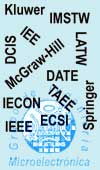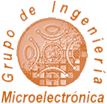
Mapa Web

Localización

Noticias

Info Santander

Gestión BD

|
| GIM>Investigación>Publicación |
| PUBLICACION |
| |
| Ficha completa |
| Título: | Short and Long Distance Marker Detection Technique in Outdoor and Indoor Environments for Embedded Systems |
| Tipo: | Comunicaciones a congresos internacionales |
| Lugar: | XXXI Conference on Design of Circuits and Integrated Systems, DCIS 2017 |
| Fecha: | 2017-11 |
| Autores: |
Álvaro Díaz
Eugenio Villar
Daniel Peña
|
| Líneas: |
Diseño y verificación de sistemas embebidos HW/SW
|
| Proyectos: |
ECSEL 737494-2 MegaMart2
|
| ISBN: | |
| Fichero: | ver fichero
|
| Resumen: | During the last years, the market of embedded vision-based systems has been growing at an accelerated rate. Virtual and augmented reality has the potential to become one of the most innovative technologies for the next decade. One of the most important aspects of these technologies is related to the spatial location of objects or people in defined environments, for which there are several techniques. One of the most widely used is based on visual marker recognition. The main problems of these approaches are related to the accuracy, the changing environments, the processing time, the operating range/distance and the price. The popularization of these technologies produces a pull effect toward the companies developing the best technology at the lowest price. This paper proposes a marker design and an algorithm to detect the markers under different ambient
conditions, with a long range to be executed on embedded systems with low computational requirements. The proposed method reduces the existing problems in the state-of-the-art related to the use of different environments and conditions such as different distances or different illumination. Moreover, the requisites of the method are minimal to reduce the cost of deployment.
Paper |
|
|








